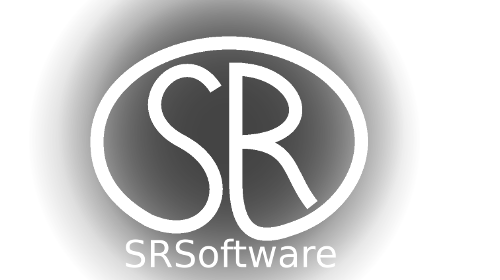Warum?
Unter Linux gibt es ein strenges Benutzerkonzept, das es den "normalen" Benutzern verbietet Programme zu installieren oder als "root" auszuführen. Das ist sinnvoll, denn dadurch kann ein Nutzer im schlimmsten Fall nur seine eigenen Dateien verpfuschen und nicht das ganze System ins Nirvana jagen. Aber es bringt auch Nachteile: z.B. muss man, wenn man nicht selbst der admin ("root") ist, genau diesen darum bitten, wenn man ein bestimmtes Programm braucht. In diesem Fall heißt das bestimmte Programm MySQL. Aber unter Linux heißt es ja auch "geht nicht: gibts nicht". Man kann jedes Programm nämlich auch im Userspace installieren. Das heißt: ein Nutzer, nennen wir in "asterix", kann das Programmpaket MySQL in seinem Verzeichnis installieren und ausführen.
Wie?
Zunächst braucht man das Programm. MySQL gibt es unter www.mysql.de zum freien Download. Wer (wie ich) keine Lust hat, das Programm selbst zu kompilieren, holt sich einfach das fertig kompilierte binary als tar.gz.
Ich habe diese Datei mittels GNU tar in meinem bin-Verzeichnis extrahiert und einen symbolischen Link darauf erzeugt:
Setup
$> tar xfvz mysql-5.5.14-linux2.6-x86_64.tar.gz
...
$> ln -s mysql-5.5.14-linux2.6-x86_64 mysql
so kann ich nun einfach mittels cd mysql in das Verzeichnis mysql wechseln und loslegen.
Mysql sucht seine Konfigurationsdateien standardmäßig in irgendeinem Systemordner, auf den wir (da wir ja nicht als root ausführen) nicht zugreifen dürfen. Also müssen wir uns ein neues config-file basteln und den MySQL-Programmen zeigen, wo's lang geht.
Meins liegt unter bin/my.conf und sieht so aus:
#
# The MySQL database server configuration file.
#
# You can copy this to one of:
# - "/etc/mysql/my.cnf" to set global options,
# - "~/.my.cnf" to set user-specific options.
#
# One can use all long options that the program supports.
# Run program with --help to get a list of available options and with
# --print-defaults to see which it would actually understand and use.
#
# For explanations see
# http://dev.mysql.com/doc/mysql/en/server-system-variables.html
# This will be passed to all mysql clients
# It has been reported that passwords should be enclosed with ticks/quotes
# escpecially if they contain "#" chars...
# Remember to edit /etc/mysql/debian.cnf when changing the socket location.
[client]
port = 7051
#socket = /var/run/mysqld/mysqld.sock
# Here is entries for some specific programs
# The following values assume you have at least 32M ram
# This was formally known as [safe_mysqld]. Both versions are currently parsed.
[mysqld_safe]
#socket = /var/run/mysqld/mysqld.sock
nice = 0
[mysqld]
#
# * Basic Settings
#
user = asterix
#pid-file = /var/run/mysqld/mysqld.pid
#socket = /var/run/mysqld/mysqld.sock
port = 7051
basedir = /home/asterix/bin/mysql
datadir = /home/asterix/bin/mysql/data
tmpdir = /home/asterix/tmp
language = /home/asterix/bin/mysql/share/english
log-error = /home/asterix/bin/mysql/error.log
skip-external-locking
#
# Instead of skip-networking the default is now to listen only on
# localhost which is more compatible and is not less secure.
#bind-address = 127.0.0.1
bind-address = 0.0.0.0
#
# * Fine Tuning
#
key_buffer = 16M
max_allowed_packet = 16M
thread_stack = 192K
thread_cache_size = 8
# This replaces the startup script and checks MyISAM tables if needed
# the first time they are touched
myisam-recover = BACKUP
#max_connections = 100
#table_cache = 64
#thread_concurrency = 10
#
# * Query Cache Configuration
#
uery_cache_limit = 1M
query_cache_size = 16M
#
# * Logging and Replication
#
# Both location gets rotated by the cronjob.
# Be aware that this log type is a performance killer.
# As of 5.1 you can enable the log at runtime!
#general_log_file = /var/log/mysql/mysql.log
#general_log = 1
#
# Error logging goes to syslog due to /etc/mysql/conf.d/mysqld_safe_syslog.cnf.
#
# Here you can see queries with especially long duration
#log_slow_queries = /var/log/mysql/mysql-slow.log
#long_query_time = 2
#log-queries-not-using-indexes
#
# The following can be used as easy to replay backup logs or for replication.
# note: if you are setting up a replication slave, see README.Debian about
# other settings you may need to change.
#server-id = 1
#log_bin = /var/log/mysql/mysql-bin.log
expire_logs_days = 10
max_binlog_size = 100M
#binlog_do_db = include_database_name
#binlog_ignore_db = include_database_name
#
# * InnoDB
#
# InnoDB is enabled by default with a 10MB datafile in /var/lib/mysql/.
# Read the manual for more InnoDB related options. There are many!
#
# * Security Features
#
# Read the manual, too, if you want chroot!
# chroot = /var/lib/mysql/
#
# For generating SSL certificates I recommend the OpenSSL GUI "tinyca".
#
# ssl-ca=/etc/mysql/cacert.pem
# ssl-cert=/etc/mysql/server-cert.pem
# ssl-key=/etc/mysql/server-key.pem
[mysqldump]
quick
quote-names
max_allowed_packet = 16M
[mysql]
#no-auto-rehash # faster start of mysql but no tab completition
[isamchk]
key_buffer = 16M
#
# * IMPORTANT: Additional settings that can override those from this file!
# The files must end with '.cnf', otherwise they'll be ignored.
#
!includedir /etc/mysql/conf.d/
Damit die MySQL-Serverprogramme diese Konfiguration auch verwenden, muss beim Aufruf der Parameter --defaults-file=~/bin/my.cnf übergeben werden, wie gleich zu sehen:
Initialisierung
Damit die grundlegenden Funktionen zur Verfügung stehen müssen die Systemtabellen erzeugt werden. Dies geschieht mit dem Scriptaufruf
$>bin/mysql/scripts/mysql_install_db --defaults-file=~/bin/my.cnf
Anschließend kann der Datenbankserver gestartet werden mit
$>bin/mysql/bin/mysqld_safe --defaults-file=~/bin/my.cnf &
Nun sollte man sich über die Eingabe mysql -h 127.0.01 -P 7051 -u root einloggen können.
Man sollte allerdings ein Passwort für den Benutzer root vergeben:
$>bin/mysql/bin/mysqladmin --defaults-file=~/bin/my.cnf -u root password 'hier-steht-das-passwort'
Anschließend sollte man sich mit mysql -h 127.0.01 -P 7051 -u root -phier-steht-das-passwort anmelden und die tollsten Sachen machen können.

Neuen Kommentar hinzufügen